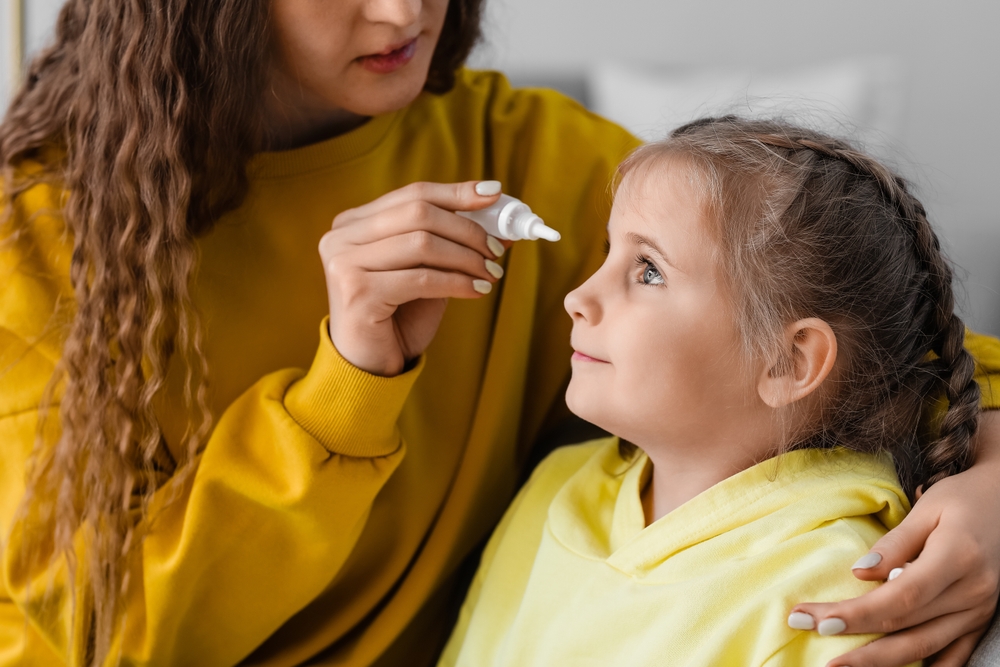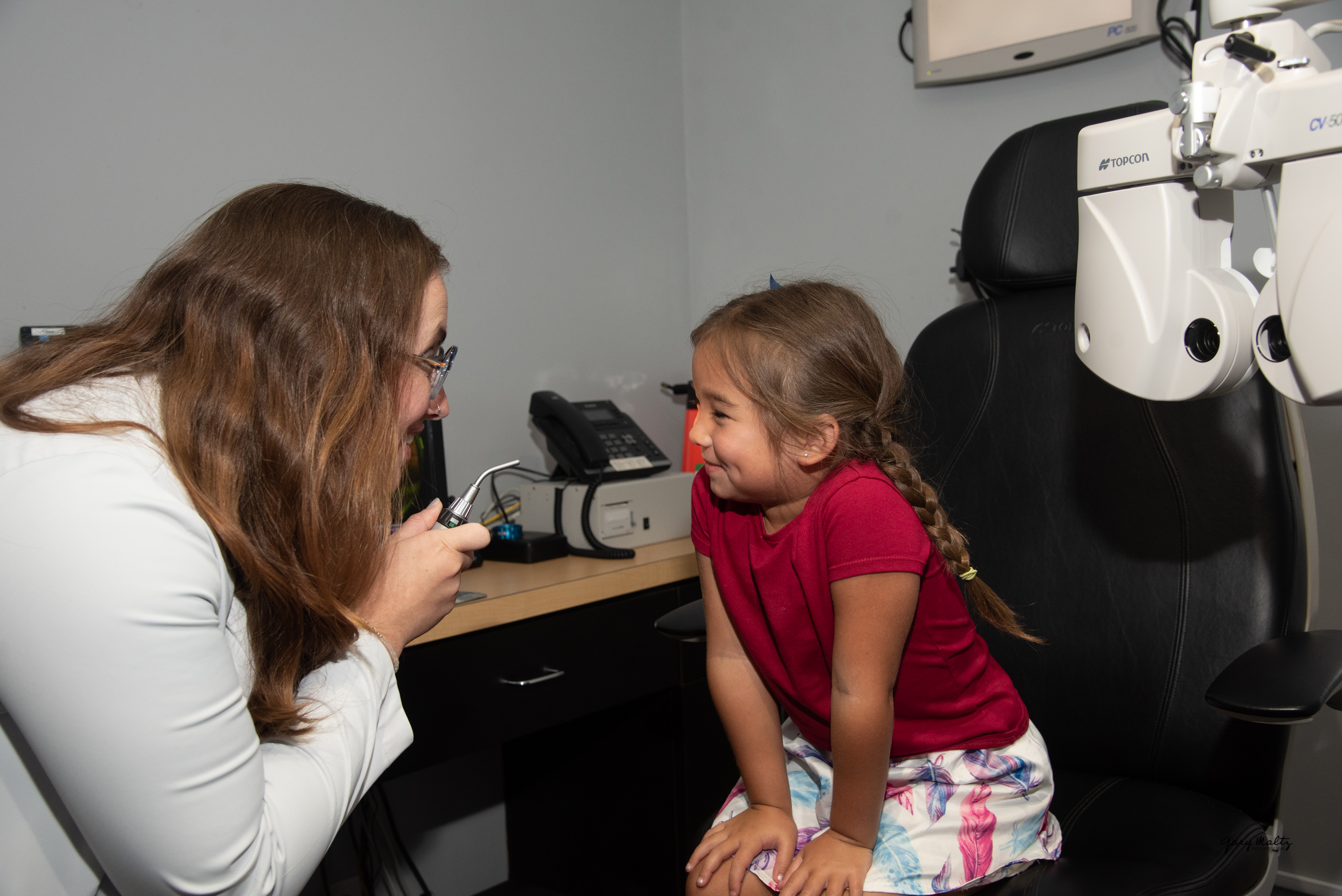
What is Atropine?
Atropine is a medication made from the Atropa Belladonna plant. The name "belladonna" means "beautiful woman" in Italian. It dates back to the 1300s and 1400s when women used to rub the leaves of this plant on their eyes to make their pupils bigger, believing it made them appear more attractive.
Why is Atropine Used in Medicine?
Atropine has been used in medicine since the 1800s to treat various conditions, including heart problems, breathing issues, digestive disorders and eye conditions. It has various purposes, but many come with serious side effects. Hence, it is important to use atropine under the guidance of a healthcare professional.
Atropine is Effective for Eye Care in Many Ways
Atropine is used as eye drops to widen the eye, allowing optometrists to see the back of the eye more clearly to examine the eye's structures.
Atropine is used:
- When Conducting an Eye Exam - Atropine eye drops temporarily enlarge the pupil and stop the eye from focusing, helping doctors accurately test for conditions like amblyopia (lazy eye) or strabismus (crossed eyes).
- For Amblyopia Treatment - Atropine eye drops are prescribed for children with amblyopia (lazy eye) as an alternative to patching, typically for ages 3 to 12, to improve vision in the weaker eye.
- For Eye Pain Relief - Atropine eye drops can treat eye pain caused by severe infections or inflammation.
- For Myopia Treatment - Doctors may prescribe atropine eye drops to children with progressive myopia (nearsightedness) to slow its progression and prevent it from worsening.
The Role of Atropine Eye Drops in Myopia Management
Myopia, or nearsightedness, causes objects in the distance to appear blurry and can worsen over time. Atropine eye drops are a promising option for managing myopia progression in children and teens. Researchers have found that low-dose atropine can slow myopia progression and prevent severe nearsightedness.
They work by relaxing the muscles that control the lens shape, which prevents the eye from elongating too much. Low doses, usually between 0.01% and 0.05%, have been found to effectively manage myopia without causing significant side effects.Atropine drops are one of many viable option to helping treat and delay myopia progression - like glasses, specialty contact lenses, and ortho-k. Interested in learning more about myopia management? Call (281) 440-5887 or schedule online.
How Do I Use Atropine Eye Drops?
- Wash your and your child's hands before and after applying the drops.
- Twist off the tip of the bottle and use a new one for each dose.
- Gently pull down your child's lower eyelid to form a pocket.
- Ensure the container does not touch your child's eyes, lashes, or skin.
- Place a single drop into the pocket of the lower eyelid, avoiding the corner.
- Press gently on the inner corner of the eye for about one minute.
- Dispose of the empty bottle in your household trash once used.
Are There Potential Side Effects of Using Atropine for Myopia Control?
Atropine can have side effects, though most are minor and may subside with continued use. Side effects include:
- Blurred vision
- Light sensitivity
- Redness or irritation around the eyes
- Fever or chills
- Sore throat
- Skin rash
- Headaches or dizziness
- Upset stomach or nausea
- Mood changes, like irritability
Seek immediate medical attention if any of these symptoms become severe.
*Note: Blurred vision may persist for up to seven days or longer, while pupil dilation can last up to 14 days.
In rare instances, atropine can lead to more serious side effects, such as:
- High fever
- Unusual irritability or agitation
- Rapid heart rate
- Difficulty breathing or irregular heartbeat
- Confusion or disorientation

Take control of your myopia management at TSO Champions.
FAQs
Are Atropine Eye Drops New?
Eye care professionals have used atropine eye drops for many years. Initially developed for purposes like eye dilation and treating various eye conditions, they have a well-established safety record. Research on atropine for myopia management started decades ago, showing its ability to slow myopia progression. Recently, researchers have explored low-dose atropine as a safer option with fewer side effects. However, some of these lower concentrations have yet to receive FDA approval.
Are the Effects of Atropine Drops Permanent?
Atropine eye drops help slow myopia progression during treatment, but the effects are not permanent. Once the treatment is discontinued, myopia may resume.
Eye doctors often use this treatment when other myopia-control options, like specialty contact lenses, are unsuitable.
Can Any Doctor Prescribe Atropine Eye Drops, and How Do We Get It Filled?
Eye doctors can prescribe atropine eye drops to manage myopia. However, a licensed compounding pharmacist must prepare the drops by diluting the full-strength version in a sterile setting.
How Much Does Atropine Eye Drop Cost? Does Insurance Cover It?
The cost of diluted atropine drops varies by pharmacy and is generally not covered by insurance.
What are the Benefits of Atropine Eye Drops?
- Effective Myopia Management - Atropine eye drops can slow myopia progression and support long-term eye health.
- Effortless Application - They are simple to use, requiring just one drop per eye at bedtime.
- Mild and Manageable Side Effects -With minimal and temporary side effects, atropine eye drops are well-tolerated.
Is Atropine Effective for Myopia Control in Children?
Yes. Research demonstrates that atropine effectively slows myopia in children. A 2-year study of children aged 6 to 12 using 1% atropine found it successfully slowed myopia12. However, the higher dose had side effects like light sensitivity and blurry near vision. Other concentrations, such as 0.1% and 0.5%, showed similar side effects. In contrast, a 3-year study of children aged 4 to 12 found that doses between 0.01% and 0.05% were safe and well-tolerated10. They were effective in controlling myopia with minimal side effects.
However, it's important to note that while atropine slows myopia progression, children will still need glasses or contact lenses to correct their vision.
How Can I Tell if Atropine Is Slowing Myopia in My Child?
While no myopia treatment can completely stop myopia progression, atropine can help slow it down. You'll know it's working if your child can see clearly with their glasses or contact lenses and is handling the treatment well with minimal side effects.
To track myopia progression, eye doctors can measure changes in your child's prescription or eye length. These measurements are then compared to research data to see how well the atropine treatment slows myopia.
References:
Belladonna. Drugs and Lactation Database (LactMed). Bethesda (MD): National Library of Medicine (US); 2006.
Massive Atropine Eye Drop Ingestion Treated with High-Dose Physostigmine to Avoid Intubation
A randomized trial of atropine vs. patching for treatment of moderate amblyopia in children.
Medical Management of Uveitis – Current Trends
Low-Concentration Atropine for Myopia Progression (LAMP) Study: A Randomized, Double-Blinded, Placebo-Controlled Trial of 0.05%, 0.025%, and 0.01% Atropine Eye Drops in Myopia Control.
Atropine for the treatment of childhood myopia: safety and efficacy of 0.5%, 0.1%, and 0.01% doses (Atropine for the Treatment of Myopia 2).
Low-Dose Atropine for Kids with Myopia - American Academy of Ophthalmology.
Five-Year Clinical Trial on Atropine for the Treatment of Myopia 2: Myopia Control with Atropine 0.01% Eyedrops.
Safety and efficacy of 0.02% and 0.01% atropine on controlling myopia progression: a 2-year clinical trial
Three-Year Clinical Trial of Low-Concentration Atropine for Myopia Progression (LAMP) Study: Continued Versus Washout: Phase 3 Report.
Combined 0.01% atropine with orthokeratology in childhood myopia control (AOK) study: A 2-year randomized clinical trial.
Atropine for the Treatment of Childhood Myopia.
IMI – Clinical Management Guidelines Report.
Information about inserting your child’s Atropine eye drops at home.
How to Use Low-Dose Atropine to Slow Myopic Progression in Kids.



